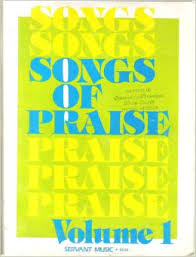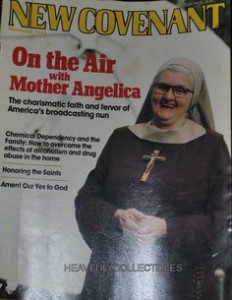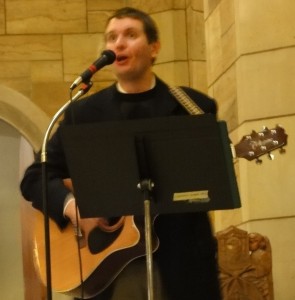A Bittersweet Thing Happened To Me Earlier This Week
This past Tuesday I played for a charismatic healing mass sponsored by the Diocese of Hartford’s Office for Charismatic Renewal. But only recently did I discover that it was to be the last of such services.
The Office for Charismatic Renewal is closing.
After years of steady stagnation of garnering new members, and a lack of interest in starting up parish prayer groups and “Life in the Spirit” seminars, the diocese finally pulled the plug on the unique offerings that this ministry could provide.
The Legacy of the Charismatic Renewal
The Charismatic Renewal is still welcome in the diocese, mind you. It has still been approved by all the popes since its inception in 1967. It is still powerfully conveyed in other parts of the world, such as in Africa, South Korea, Haiti, and most notably, Latin and South America. But the United States, where this movement had spontaneously begun at a college retreat in Western Pennsylvania, it has, except in some pockets here or there, proven lackluster.
I understand that not everybody who follows my blog are Charismatic. That’s okay. It’s just that a very large percentage of why I do what I do is because of the influence of the Charismatic Renewal in my life. Before I became a Roman Catholic, before my stint as a Bible Study leader in high school, before I gave my life to Christ, the elements of the Charismatic Renewal had surrounded me, even though I was unaware of it.
My Own Experiences
My initial guitar lessons (I was ten) had used “Songs of Praise” as a musical textbook. I was getting lessons from the musicians at St. George’s Episcopal Church, and “Songs of Praise” was one of the new songbooks put out by members of the Word of Life Covenant Community, incorporating praise songs from their own songwriters, from Rev. Graham Pulkingham’s Church of the Redeemer (Episcopal) in Houston, and worship songs that had become popular in prayer groups.

St. George’s was to be the home of George Mims, himself a worship leader at Church of the Redeemer. He brought to St. George’s a worship vitality that I had never experienced in any formal liturgy. It attempted to be a synergy of both traditional and charismatic forms. Before I had any grounding behind the history of the renewal to that point, I was greatly influenced by my personal experiences through this worship.
It was only a matter of time before all the other elements fell into place. David Wilkerson, the author of The Cross and the Switchblade (itself, a seminal part of the charismatic renewal), opened up an interdenominational church near me, and I found myself attending many of his services.
The biggest influence for me, bar none, was my involvement with University Christian Outreach at my college. It was here that I formally went through The Life in the Spirit Seminar, and had five amazing years (college and one year post-college), where I grew in my faith and my skill in worship leading. At the end of those years, I had formally entered the Catholic faith.
New Covenant Magazine’s Real-Time Witness
After the mass, I was invited to go to the Charismatic Office and take any resource they had that appealed to me. They were to clear out their office within a few days, and I would be helping them. I was stunned about such generosity, but they said that nobody was using these things, I might as well.
I collected all of the old issues of “New Covenant” magazine I could find. This (now defunct) magazine was initiated to serve the Charismatic Renewal. It had a good run of twenty years, before being purchased by Our Sunday Visitor, where it ran for about ten more.
In its pages contained the major milestones of the renewal captured in real time. The major stories. Fr. Michael Scanlon being named head of Franciscan University of Steubenville. David Wilkerson’s controversial writings that had made him rejected. The grand meetings of thousands at the Vatican, where Pope Paul VI gave his endorsement. The movement’s entry into international spheres, where it became widely accepted.
Of course, on these pages were also a vivid reminder of the failings of major individuals in the renewal, before their fall. I already mentioned Rev. Graham Pulkingham, a prominent Episcopal priest who, sadly, was one of the very first to have victimized teenagers. He was not the only one. Fr. John Bertolucci author of five best-sellers, on his own television show, and on the editorial staff, was also prominently displayed. (He had passed away earlier this year; stripped of his collar, his passing was as unrecognized as they come).
There were also the prominent leaders who left the Catholic faith to start their own interdenominational churches, or those who left the priesthood to marry. There are the dynamic worship leaders who were burnt by the trappings of covenant community and are now avowed agnostics. And who knows the whereabouts of every average testimonial?
I peruse the pages of photographs, and I see such hope and promise. I see the enthusiasm of little kids in these pictures. I was a little kid at this time. I could have been one of those kids. Even though my family was not involved formally with the Renewal, many of my college friends were, and some have renounced the movement entirely.
How Did It Fall Apart?
So, what happened? How did the movement that began with such promise whittle down so small over time? Surely, it still has profound influence in many areas of the globe, and it has captured the attention of those highest in the Vatican, including the current pontiff.
It’s something I wrestle with daily.
Reading the seminal book of the rise and fall of this movement (Days of Fire and Glory by Julia Duin, and participating in online forums from former and current charismatics, there are definitely a number of factors.
Of course, the most major reason has already been hinted at above: the moral failings of many of the leadership is a huge factor of many people’s falling away. Not just those priests who preyed upon teenagers (after all, many more priests are faithful to their calling). But the sins of covenant community members, demanding an idyllic livelihood according to the dictates of a few, for which many found its system to be equal to financial and spiritual slavery.
But even outside the failures of errant priests and the brokenness of the covenant community model, you had the third tier of prayer groups, which, while heartily accepted by the Popes and Cardinals, was oftentimes relegated to being merely tolerated at the parish level. Some priests, instead of participating and assisting lesser-catechized members towards orthodoxy, outright condemned the movement as a whole. This created an unnecessary rift between traditionalists and charismatics; this created division for which there need not be any.
Can the Renewal Have a Resurgence?
What I need to remind myself about is that the very beginning years of the Renewal, where its adherents received rapid growth, this had occurred without any formal recognition from the diocese. They were able to get their message out, internationally, without an office letterhead or dedicated phone extension. They did this before the dawn of the Internet! They amassed rapid growth, thousands of people attending their annual conventions, and all they had to use at the time was a series of paperback books, newspaper articles, and ultimately New Covenant magazine.
What I need to remind myself is the continual sense of why the Renewal is important in the first place. And I believe what the Why is, is a sense of providing direction for the laity to take part in the New Evangelization. Being able to share the faith, the Gospel of Christ, living and active in our lives today, and being led by the Holy Spirit to do great works. That this isn’t merely relegated to the clergy or best-selling authors. It’s for everybody.
I believe wholeheartedly that a mass movement of powerful Christian Renewal can happen at any time, and that the elements in place in the late-1960s/early-1970s made it very possible for this particular expression of such to happen at an accelerated pace. What I suspect is that, embedded within the legacy that these magazines and other materials have captured, are the blueprint as to how to jump-start such a renewal in one’s parishes. I also believe that the broader story (that of the failings, mistakes, and outright venomous scandals) can also give understanding as to how to avoid the pitfalls that had stunted the growth of the renewal.
Concluding Thoughts
I am disheartened by the fall of the Charismatic Renewal, as it is where I live. It has left a legacy of much powerful witness for many people, even though many do not recognize it. I do not doubt that there are pockets of power and witness, even for today.
To their credit, the current leadership of the local Charismatic Renewal Office chapter has vowed to continue going forward, despite the formal recognition of the diocese. They are beginning the next chapter in their odyssey.
In the meantime, I will be studying these materials, to ascertain what they did right, and where they erred. By studying the past so to create a framework of action that works in the current day. And to assist others in knowing Christ personally, being led by the power of the Holy Spirit.











Nick,
I’m sorry for your loss, actually, our loss, as it will be the Body of the Church as a whole which suffers the loss. I will anxiously await the next door God will open because he is capable of bringing good out of poverty and He said “Behold, I am with you always, to the close of the ages” Mt 28:20.
Skip
Thanks, Skip.
Hi Nick,
As you know we live in the same diocese. That is sad to hear.
This may sound like a over simplification but we can pray for and remain open to a fresh outpouring of the Holy Spirit. My guess is that it will look different from the movement we were part of in the 1970s and onward. St. John Paul II called Catholic charismatics to “ecclesial maturity” i.e., a grown-up understanding of the Church. I think that started to happen as many charismatic Catholics got more plugged-in to their parishes and embraced a Catholic understanding of orthodoxy.
Peace,
Angelo
I totally agree.
And while it is impossible for us to not sin or not make mistakes, I think we can use the opportunity to observe the history as to what worked, what didn’t, and what can work current-day and not.
Nonetheless, we’re due for a diner-date, dude.